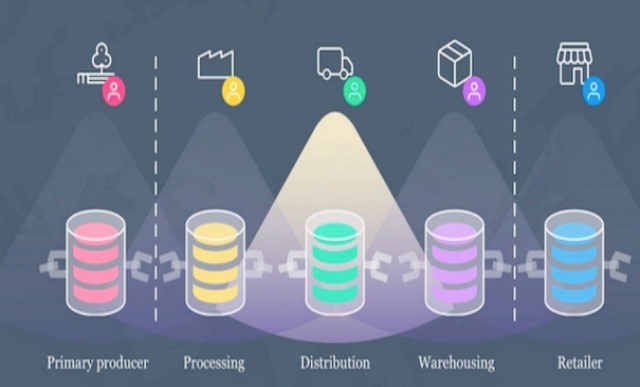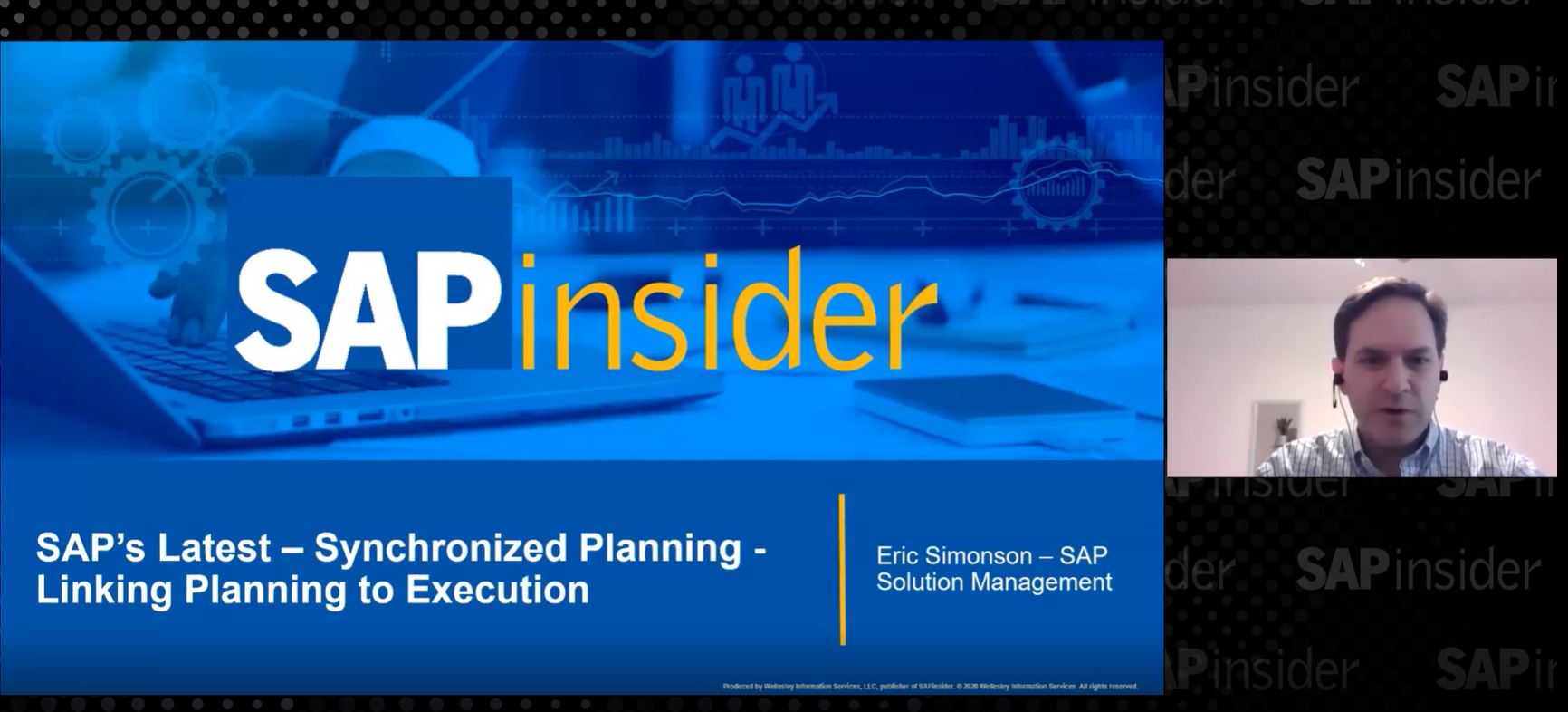Exploring the Promise of AI in the Supply Chain
Meet the Authors
Key Takeaways
⇨ Companies are experimenting with AI across demand forecasting, inventory management, route optimization, warehouse automation, transportation management, supplier selection, quality control, risk management, customer service, sustainability, and data analytics.
⇨ AI-enabled supply chain management allows early adopters to improve logistics costs by 15%, inventory levels by 35%, and service levels by 65%, compared with slower-moving competitors.
⇨ Data is what feeds AI and without an end-to-end data pipeline that ensures the appropriate data is available, properly engineered, formatted, updated, governed, and accessible at the right time, there is little hope for a successful long-term AI project.
As companies aggressively pursue lofty supply chain goals in efficiency, agility, resiliency, and sustainability, they are testing the waters with artificial intelligence (AI), striving to build tangible business cases at scale for the rapidly emerging technology.
There is no shortage of potential AI applications for the supply chain, as companies experiment across demand forecasting, inventory management, route optimization, warehouse automation, transportation management, supplier selection, quality control, risk management, customer service, sustainability, and data analytics.
The modern supply chain exhibits complexities that are theoretically perfect fits for AI. For instance, the volume of data has dramatically increased as more products and equipment are connected via Internet of Things (IoT) solutions and transmitting usage, performance, condition, location, and environmental data in near real-time. At its core, AI can quickly parse massive quantities of data, detect out-of-control conditions, and trigger predictive and reactive workflows associated with specific conditions. Also, supply chain systems are increasingly integrated with adjacent systems in manufacturing, logistics, product design, asset management, and service management. AI can rapidly consider interdependent variables and trade-offs across all these systems, which can inform decisions.
A recent McKinsey study found that AI-enabled supply chain management allows early adopters to improve logistics costs by 15%, inventory levels by 35%, and service levels by 65%, compared with slower-moving competitors.
Supply chain leaders must assess for themselves whether they are fully ready to adopt AI-enabled solutions, based on the maturity of their processes and condition of their data. For instance, supply chains that still rely on paper-based processes must first digitize their process portfolio.
“Supply chain organizations need to have a strong digital foundation in the business process arena before they begin to think about leveraging AI,” said David Vallejo, Vice President, Global Head of Supply Chain Planning, Manufacturing and Logistics Solution Management at SAP.
Another early step in the AI journey is often master data clean-up. SAP offers an AI-enabled capability in SAP Integrated Business Planning (IBP) called master data anomaly detection, which is deployed in a human-assisted mode as opposed to autonomous AI. It combs through master data and detects patterns and inconsistencies, presenting cases back to a human for correction or intervention. Another example is AI-enabled virtual inspection to observe and improve quality as part of SAP’s Digital Manufacturing. The human may still be involved to supervise and spot-check, but in mass production AI can significantly boost productivity.
Supply chain shops getting started with AI often test the waters with human-assisted use cases like this. Another example is in the supply chain planning space, where AI-generated forecasts can be explained to a human as opposed to asking a planner to blindly accept a number that’s been magically generated.
The best companies are carefully testing use cases for AI in the supply chain and pursuing those that deliver business value. Blue Diamond Growers – a century-old cooperative of almond growers with a diverse portfolio of branded consumer products – is one of these companies. Steven Birgfeld, Vice President, Information Technology & Services is partnering with his counterpart in supply chain management to explore some AI proof of concepts in demand sensing, crop forecasting, and logistics.
“We will prioritize AI use cases where we may see solid business value, not technology for technology’s sake,” said Birgfeld.
Blue Diamond Growers leveraged SAP Signavio to analyze supply chain processes and uncover opportunities for automation and AI, which led them to demand sensing, crop forecasting, and logistics. In demand sensing, the company traditionally used statistical forecasting in SAP Integrated Business Planning (IBP), based largely on three-year trends. AI presents the opportunity to ingest external data elements like retail sales data from the likes of Amazon and try to improve the accuracy of demand forecasts. Every percentage improvement in demand forecast accuracy has material downstream implications in terms of warehousing, manufacturing, days of inventory, and ultimately on-time-in-full delivery to customers. In crop forecasting, Blue Diamond Growers is amassing data from multiple internal and external sources, including detailed weather data, to try to predict almond crop variety and acreage.
“We’re trying to plan out three years plus to make sure we have the right warehousing and production resources. We’re looking for ways AI can help us predict what year three is going to look like based on multiple sources of data and trends,” said Birgfeld.
In logistics, having just gone live with SAP Transportation Management and Logistics Business Network, Birgfeld and his colleagues are exploring predictive data analysis techniques to improve visibility of ship times and delivery times. They will also eventually benefit from the work SAP recently did with generative AI and large language models (LLMs) to improve the laborious task of receipts processing of inbound cargo in the transportation space.
Blue Diamond Growers partnered with a small third-party AI solutions and service provider called First Shift to help with AI proof of concept design and deployment. It also beefed up its own staff of data scientists to build internal competency in the AI space.
Often co-developing with its customers, SAP is actively embedding AI capabilities into its Digital Supply Chain solution portfolio. For instance, users can now take advantage of AI to improve demand forecasting within the Integrated Business Planning (IBP) solution. Demand forecasts typically rely heavily upon historical data like sales figures, limiting their accuracy. Now with IBP, demand planners can designate which factors to contemplate in a forecast, such as promotional activities, calendar events, or product price. The AI-enabled solution weighs each factor individually and in relation to each other to generate a more accurate forecast.
If demand-impacting events occur – such as a regional spike or drop in sales – planners are automatically alerted by AI-enabled detection systems. Planners can then choose where and how to intervene based on magnitude of business impact. All told, IBP has more than 10 key processes which are AI-driven – from forecasting to alert thresholds, master data quality, and segmentation. SAP Hana Cloud database also seamlessly scales the memory consumption based on AI. AI development has a fast turnaround across all SAP solutions, centrally driven by a large Business AI team, which is heavily invested in research, testing, and security. The team also defines the guiding principles that SAP follows to ensure SAP’s AI implementations are ethical.
ZF Friedrichshafen, a global technology provider of mobility solutions to the automotive industry, utilizes the demand planning capabilities in SAP IBP to quickly anticipate and adapt to shifting demand. By using the AI-enabled planning features of SAP IBP, ZF Friedrichshafen decreased its forecast turnaround time by 92%, freeing planners from time-consuming, repetitive tasks. As a result, the company now enjoys flexible control over levels of the supply chain, including location, product, channel, and customer.
In the inventory management space, SAP is embedding AI to enable customers to promptly detect slow-moving materials and reduce inventory carrying costs. Further, SAP is equipping customers to accurately predict inventory delivery dates leading to increased supply chain efficiency.
For supply chain risk management, SAP has partnered with Everstream Analytics to offer customers the ability to assess risk on a global scale. Everstream uses predictive insights and risk analytics to uncover everything from readiness risks to irregular weather or potential insolvencies. Even companies early on in their AI journeys can benefit from AI-enabled solutions like this, simply by uploading supply chain data sets and seeing what insights can be gleaned.
Looking forward, SAP will continue to invest aggressively in integrating generative AI across its portfolio which includes the Digital Supply Chain space. One simple generative AI capability which will become more ubiquitous over the next 12 to 18 months are intelligent digital assistants.
“You’ll be able to type in a question – like ‘where do I have weak spots in my inventory management?’, ‘where do I have exposure?’, or ‘where will my service levels be?’,” said Vallejo. “And if you feed the bot with your enterprise data, it comes up with very interesting insights in a natural narrative way, not just columns and rows of numbers, but actually with a narrative that it is very intuitive.”
To support its AI strategy in the supply chain, SAP is evolving its stance on data. Historically, SAP has focused on ERP and all the data that resides there. But now, the company is contemplating the vast universe of external ambient data that is begging for AI applications and putting it into the context of a business process. SAP is working on numerous AI use cases leveraging this data in the next 12 to 18 months and many more are in the early stages of investigation. SAP also takes the ethical and societal dimensions of AI very seriously and has founded an AI ethics council as part of this endeavor and published clear guiding principles and an AI Ethics handbook.
Tips for SAPinsiders in Supply Chain Management
Business and IT stakeholders in the SAP ecosystem should consider the following factors when setting AI strategy for the supply chain and selecting execution partners:
- Resist AI hype. AI should be understood as a tool and not as an end in itself. Sometimes, driven by the hype around AI, companies pursue AI by all means. This approach can lead to AI being used for the wrong scenarios – and then the hoped-for benefit is not as great as expected or even fails to materialize at all. Therefore, the approach should be to ask: What tasks and work steps do I want to optimize? What will really benefit my business? And only then businesses can evaluate whether AI is the right approach.
- Scope and scale. Consider what automations come ”out of the box” from solution/service providers and have the ability to build and customize automations as well. It is important to look at solutions that have the flexibility to mold into the specifics of your organization while also providing plenty of automations out of the box. Also consider that there are a lot of point solutions in the market, so look for those that have an array of automations, not a single solution.
- Time benefit. Look at which manual tasks are taking up the most amount of time from your team and identify solutions that match those needs then consider what the team could be doing with that time back. This will help you see where you could be 3-6 months down the line.
- Support model. You probably already have a budget in mind. So as you look past that, consider how the technology/service provider is going to deliver consistent support. They will either be staffed in a shared model where you will get one of many support engineers assisting in tasks as things get escalated higher or you may have a dedicated team or lead. Either way, there needs to be a way that your unique environment is managed and does not start from square one when opening a ticket or when your lead consultant is out of the office. Support documents are outdated. Instead, look to those providers that have invested in automation. Don’t consider their automation investment as a way for them to manage you at a lower cost but more as a way of driving consistency. They will spend more time upfront customizing automation for your needs than in a manual support effort. This will pay off in the long run as your business will receive faster response times, less downtime during project work and overall better SLAs for the business.
- Data foundation. A critical factor for any AI project reverts back to having a sound data strategy. Data is what feeds AI and without an end-to-end data pipeline that ensures the appropriate data is available, properly engineered, formatted, updated, governed, and accessible at the right time, there is little hope for a successful long-term AI project. Once that process is in place, selecting the appropriate models with transparent algorithms and high accuracy are hugely important, as are strong support, maintenance, and viability of the ISV or service provider.
- Robust Platform. Which partner offers the most flexibility – in terms of quantity and quality of large language models (LLMs), predictive AI, and depth of machine learning (ML). Also look for the greatest degree of trust, security, and IP protection – in terms of data sovereignty, transparency, and ownership of company data, i.e. your data is your data. Finally, look for scalability that enables a 10+ year journey.
- Depth and breadth of ecosystem. Which partner has the partners and companies developing and delivering precision models and user experiences.
- Simplicity. Which partner delivers a single, integrated platform that is easy to understand and doesn’t require you to manage different vendors and complexity.









